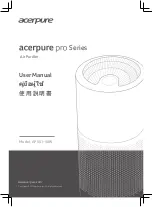
21
Liquid Side Valve
Gas Side Valve
Pressure Gauge (for R410A)
Step.1
Step.2
Open
Clase
Step.3
Step.4
Step.5
Step.6
Vacuum pump (for R410A)
Tube (for R410A)
Liquid valveLiquid valve
Liquid valve
Liquid valve
Service port cap
Valve cap
Valve cap
Gas valve
Gas valve
Gas valve
Gas valve
Open 90°
1. Connect gauge and pump as figure, step1.
2. Open low-pressure gauge, and operate vacuum pump. If the scale- moves of gauge (Iow) reach vacuum
condition in a moment, tighten joints.
3. When pressure is 10 Pa, stop pump and close joint, wait for 5 minutes, the pressure is not over 15 Pa.
4. Open the valve rod for the liquid valve to an angle of anticlockwise 90 degrees.
After 6 seconds, close the 2-way valve and make the inspection of gas leakage.
5. No gas leakage?
In case of gas leakage, tighten parts of piping joint. If
leakage stops, then proceed step 6.
If it does not stop gas leakage, discharge whole refrigerants from the service
port. Repeat piping procedure and vacuumize.
6. Detach the charge hose from the service port, open liquid valve and gas valve. Turn the valve rod anticlockwise
until hitting lightly.
7. To prevent the gas leakage, close service port’s cap.
8. After attaching the each cap, check the gas leakage around the caps.
!
CAUTION
● If the refrigerant of the air conditioner leaks, it is necessary to discharge all the refrigerant. Vacuum first, then
charge the liquid refrigerant into air conditioner according to the amount marked on the name plate.
● Please do not let other cooling medium, except specified one (R410A), or air enter into the cooling circulation
system. Otherwise, there will be abnormal high pressure in the system that will crack it and lead to personal
injuries.
Purge and Vacuuming









































